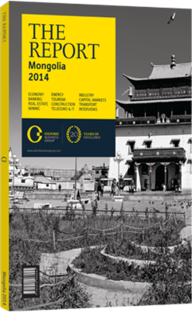OBG talks to Randolph Koppa, President, Trade & Development Bank

Interview: Randolph Koppa
Could the Savings Bank case affect the reputation of Mongolia’s banking sector in the short term?
RANDOLPH KOPPA: By late 2008 and early 2009, Savings Bank and Mongol Post Bank each had high levels of non-performing loans. They merged, although no real fresh capital was brought in, and Savings Bank was given a chance to keep going. It could not correct its problem loans quickly enough, and was not earning enough from the rest of the business to build its capital base. It had high operating costs, with 500 branches and an asset base around one-third that of Khan Bank’s, resulting in lower margins and earnings. After some time there appeared to be no way the bank could increase its earnings, and it was not successful in attracting investors to meet capital requirements. The Central Bank had to intervene and take over Savings Bank, stabilising it and laying the ground work for a new privatisation down the line. In the end, the Savings Bank case did not come as a real surprise to us in the banking sector, but more as a natural consequence of a previous set of conditions. It is good to see, however, that for the first time such a situation is being taken care of properly, with the necessary steps being taken to provide a viable solution.
We have three or four banks at the core of the sector, which account for about 75% of assets and profits in the country. As long as the core is in good shape, the sector as a whole will be too. We therefore do not expect the incident with Savings Bank to have a significant impact on the situation locally, notwithstanding how it might be viewed from abroad.
How do you rate banks’ involvement in providing funding for small and medium-sized enterprises (SMEs)? How can this be encouraged?
KOPPA: For the past several years, the World Bank, the German Development Bank and the Japan International Cooperation Agency have established a series of pass-through loan programmes. These have effectively made long-term, low interest rate loans or grants available to the country to be used, in turn, as loans to SMEs by local banks. Loan size is typically around $500,000, with some of them up to around $1m. There has also been an SME fund set up by the Mongolian government that provides local banks with tugriks at a lower interest rate than the market rate. Furthermore, additional money has been available from the Ministry of Agriculture to enable banks to help SMEs in that sector. The challenge is to get even more funds for longer term credits to SMEs, and to make sure they are aware of the different options available. As more programmes become available through the government and international institutions, more SMEs will have access to funds to expand their operations and boost the economy.
Over the next decade, what strategies need to be prioritised in order to improve Mongolia’s commercial banking sector?
KOPPA: The banking sector has been providing 95% of the funding for economic activity in the country. The financial sector must now be expanded to provide other means of funding, such as through the development of a proper stock exchange and a corporate bond market, which will attract more investors. There need to be more asset management and wealth management services. This is the direction the sector has to take.
In addition, there remain issues with regard to cash flow lending. This is still a collateral-based lending market and sometimes there is a lack of deep analysis on the businesses themselves. To meet clients’ needs, local banks must gain a better understanding of financing structures and find more attractively priced financing solutions, which often will require international partnerships and agreements with larger foreign banks. I also think there is room to expand the use of technology, such as for mobile banking, to provide personal payment options for retail clients.
As these technologies are applied, the legal and regulatory frameworks will also need to keep pace in order to provide the flexibility and protection needed to enable the banks to offer cost-efficient services.
You have reached the limit of premium articles you can view for free.
Choose from the options below to purchase print or digital editions of our Reports. You can also purchase a website subscription giving you unlimited access to all of our Reports online for 12 months.
If you have already purchased this Report or have a website subscription, please login to continue.

